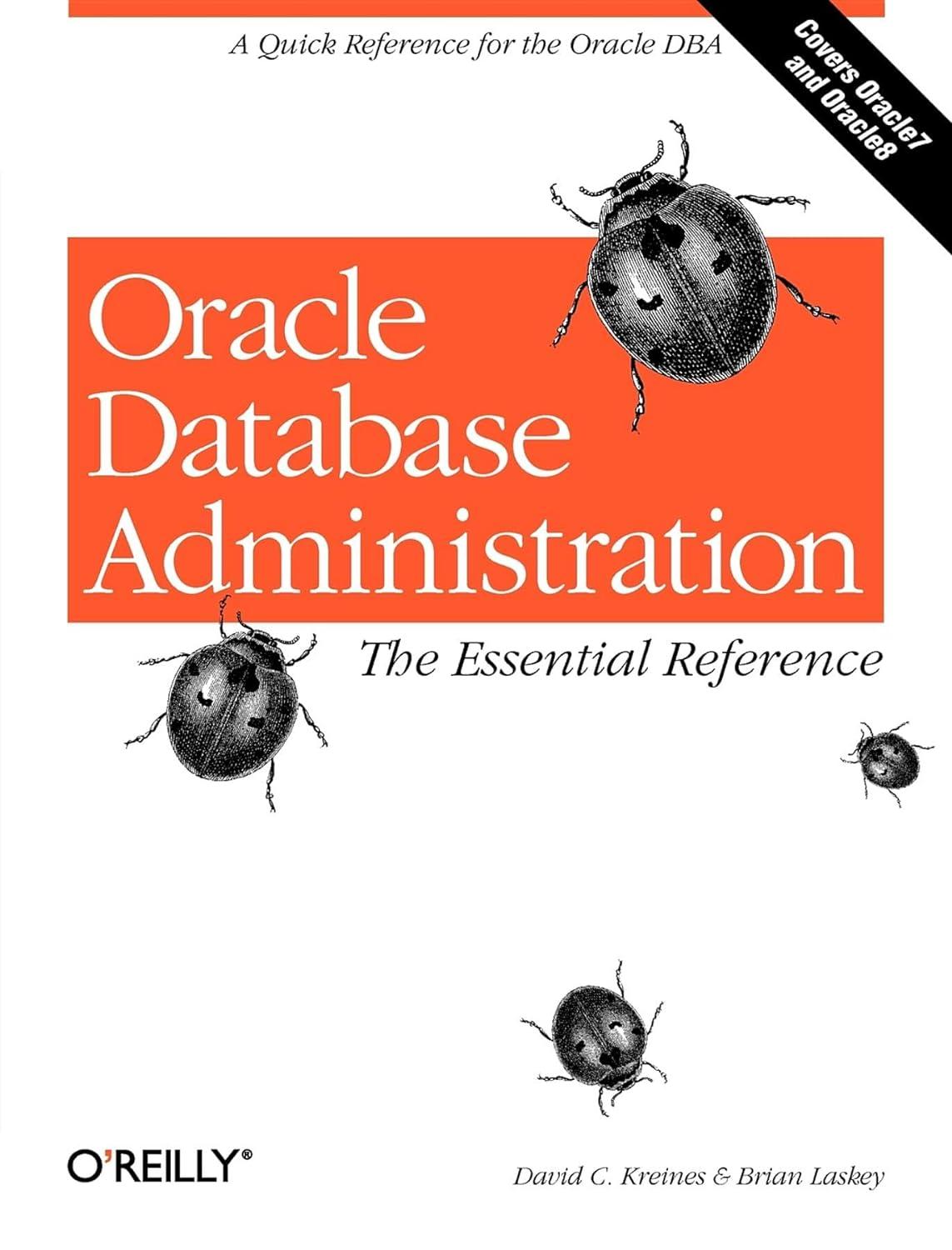Question
Building a l inked l ist and traversing it iteratively and r ecursively Write a C program that reads int egers from the keyboard. Your
Building a l
inked l
ist and
traversing
it
iteratively and r
ecursively
Write a C program that reads int
egers from the keyboard. Your program should then build a
linked list in the heap. Each node should be defined as a structure with two members: an integer
and a pointer to the next node in the list. The last node in the linked list points to NULL.
Your pr
ogram should
be able to
insert
an integer
into the
front
of the list
,
find an integer
and
return a pointer to the corresponding node, and
delete an integer
from the list (if found).
Also,
your
program
should be able to use
the list to
print out the integer
s
in the order in which they
were
entered
.
That is, you need to
print the tail of the list first
. This can be done either by using an
iterative strategy
or a
recursive strategy
for printing.
We ask you to implement both strategies.
You should provide the
user with a menu with
six
options to pick from:
1
Insert integer into linked list
2
Find integer in linked list
3
Delete integer from linked list
4
Print out integers backward
using the
iterative strategy
5
Print out integers backward using the
recursive
strategy
6
Quit
Enter
1
,
2
,
3
,
4
,
5
, or
6:
Use a
switch
statement for controlling the menu. The menu is continually displayed until
option
6
is entered by the user.
You should manage properly an invalid choice.
Options
1
,
2
, and
3
:
If the user picks opt
ion
1
,
2
or
3
,
you should ask him/her to input an integer.
Option
2
:
If the user picks option
2
,
and the entered integer is not in the list,
the
find_node
function
should return
NULL
to the invoker
. Let the user know that the integer is not
in the list
.
Option
3
:
If the user picks option
3
, and the entered integer
is in the list
, the corresponding
node is deleted from the list and a pointer to the first node in the new linked list
should be returned
. Let the user know that the integer has been found and d
eleted
.
If the user picks option
3
, and the entered integer
is
not
in the list
, no node is deleted
and a pointer to the first node in the new linked list (which is still the same list)
should be returned
. Let the user know that the integer has not been fou
nd
.
2
/2
A
success_flag
_ptr
pointer to an integer
should
be used to indicate whether
the node was successfully deleted or not. Refer to Lecture 9, Slide 20.
Your program should have
five
functions
(operations on linked lists)
that implement respectively
:
1)
the i
nsertion (
insert_node
),
2)
the search (
find
_node
),
3)
the deletion (
delete_node
),
4)
the backward print iteratively (
_
backward_iteration
), and
5)
the backward print recursively (
_
backward_recursion
).
Those functions will be called from
main
.
Structure of y
our program
A
code skeleton
(
assignment
1
0
.c
) i
s available for you to download from the class
Blackboard shell
.
Fill this file
with your
code
.
You
must
use this skeleton as is.
You cannot
change the signature (i.e., header) of any of the provided function declarati
ons
Step by Step Solution
There are 3 Steps involved in it
Step: 1

Get Instant Access to Expert-Tailored Solutions
See step-by-step solutions with expert insights and AI powered tools for academic success
Step: 2

Step: 3

Ace Your Homework with AI
Get the answers you need in no time with our AI-driven, step-by-step assistance
Get Started


